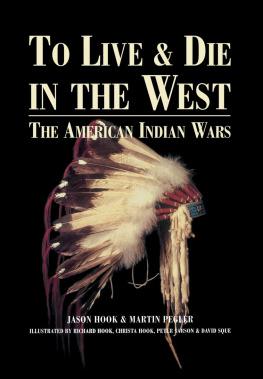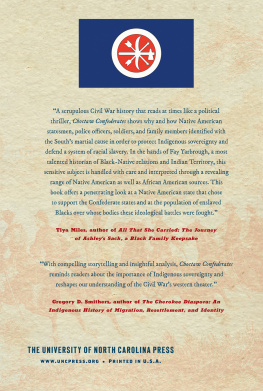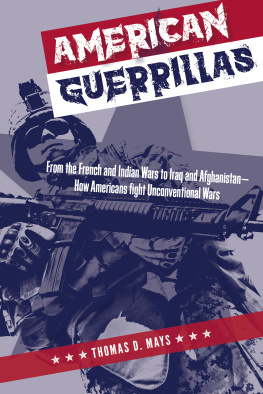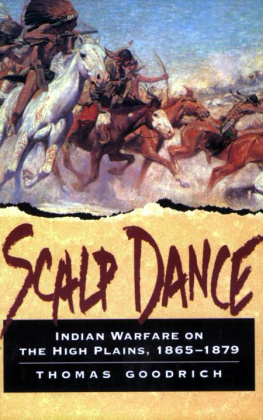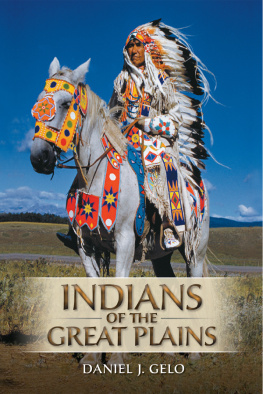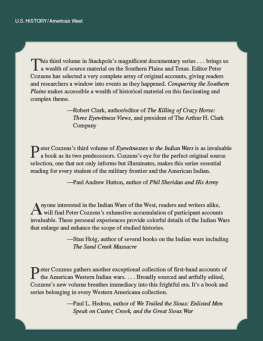This edition is published by PICKLE PARTNERS PUBLISHINGwww.picklepartnerspublishing.com
To join our mailing list for new titles or for issues with our books picklepublishing@gmail.com
Or on Facebook
Text originally published in 2002 under the same title.
Pickle Partners Publishing 2014, all rights reserved. No part of this publication may be reproduced, stored in a retrieval system or transmitted by any means, electrical, mechanical or otherwise without the written permission of the copyright holder.
Publishers Note
Although in most cases we have retained the Authors original spelling and grammar to authentically reproduce the work of the Author and the original intent of such material, some additional notes and clarifications have been added for the modern readers benefit.
We have also made every effort to include all maps and illustrations of the original edition the limitations of formatting do not allow of including larger maps, we will upload as many of these maps as possible.
ASYMMETRICAL WARFARE ON THE GREAT PLAINS, A REVIEW OF THE AMERICAN INDIAN WARS 1865-1891
By
Lieutenant Colonel Lowell Steven Yarbrough
ABSTRACT
The American Indian policy, formulated at the turn of the 19 th century, significantly impacted the national military strategy. President Jeffersons plan for Indian removal became the cornerstone for federal policy. Congress would bear the responsibility for crafting the nations Indian policies, but the burden for execution was left to an unprepared and undermanned Army.
From the end of the Civil War to the beginning of the Spanish-American War in 1898, the principal mission of the Army was fighting Indians. Returning to the Western frontier the Army attempted to fight the Indians using the tactics that proved successful in the Civil War. The diverse Great Plains tribes, using raids and ambushes, successfully fought a thirty-year war against a superior military force. It would finally take the unorthodox tactics of several field commanders to bring an end to the fighting.
This paper examines the national policy and the means used to implement it. The paper examines asymmetrical warfare through its discussion on critical shortcomings in military preparedness and strategy. The past several conflicts that U.S. military forces have participated in (Somalia, Haiti, Bosnia, Kosovo, and Afghanistan) suggest that the American Indian Wars offer valuable strategic lessons.
ASYMMETRICAL WARFARE ON THE GREAT PLAINS, A REVIEW OF THE AMERICAN INDIAN WARS--1865-1891
The first, the supreme, the most far-reaching act of judgment that the statesman and commander have to make is to establish...the kind of war on which they are embarking; neither mistaking it for, nor trying to turn it into, something that is alien to its nature. This is the first of all strategic questions and the most comprehensive. Carl von Clausewitz {1}
PURPOSE
The darkened silence is broken by the image of a cavalry units guidon flapping in the wind and a narrators voice telling of the defeat of Colonel George Armstrong Custer and his Seventh Cavalry Regiment at the Battle of Little Bighorn. The next scene shows mounted Indian warriors gathering to head out on the warpath against the white man, and finally concludes with two cavalry troopers pursuing a runaway stagecoach. Once stopped, the troopers discover the body of the dead army paymaster and the shaft of an Indians arrow stuck in the wagon. The trooper, staring at the arrow, pessimistically states that it appears pay is not coming for another three months. This opening scenario from John Fords movie She Wore a Yellow Ribbon begins the fictitious tale of a crusty old cavalry officer, portrayed by John Wayne, at the end of his career and his last fight against the Indians before his retirement from Army service. This movie, along with so many other Hollywood portrayals of American Indians as bloodthirsty savages, perpetuates the image we have of the Indians that fought against the white man in the old Southwest, doing little justice to actual historical truth. What is the truth? How did inferior Indian tribes fight such an effective war against a technologically advanced Army? How did the national policy dealing with the Indian tribes influence the Armys military strategy? How did the Army finally defeat the Indians? The answers to these questions may possibly provide some doctrinal application relevant to the type of warfare the United States anticipates it may likely face in future conflicts.
Soon after the concerted terrorist attack against America on 11 September 2001, President George W. Bush spoke to the American people telling them that they needed to be prepared to fight a long and costly war against terrorism. He told them that this would be like no other war fought by Americas sons and daughters, and that the enemy would be evasive, elusive, and that victory would not be easy to define:
This war will not be like the war against Iraq a decade ago, with a decisive liberation of territory and a swift conclusion. It will not look like the air war above Kosovo two years ago, where no ground troops were used and not a single American was lost in combat. Our response involves far more than instant retaliation and isolated strikes. Americans should not expect one battle, but a lengthy campaign, unlike any other we have ever seen. {2}
It is unlikely that the scenes from this war on terrorism, flashed on television screens in Americas homes by the various news organizations, will be similar to the horrid images of wounded and dying American soldiers seen during the Vietnam War or endless lines of enemy prisoners of Operation Desert Storm. The scenes will probably not look like the black and white film clips of World War II and Korea. What will they look like? The grotesque image of the dead soldier being dragged through the street in Somalia or mass genocide like that in Rwanda might provide a small glimpse of the type of warfare we, as a nation and an Army, may be called upon to fight in the 21 st century. Could the President have related the nations impending war against terrorism to the battles and campaigns fought against the American Indians in the last half of the nineteenth century? To describe the war on terrorism he could have possibly used a scene from a John Ford movie showing a gallant cavalry charge chasing off attacking Indian warriors, only to have the same warriors attack and kill civilians on a stagecoach later in the movie.
Could Hollywood films resemble the live action news clips we may see in future conflictsthe war on terrorism, peacekeeping operations in the Balkans, or Africa? This paper examines the United States policy concerning the American Indians and the political and military means used to implement the policy during the latter half of the 19 th century. It discusses the Indian warrior as a guerilla fighter, using asymmetrical warfare against the unprepared frontier Army.
Asymmetrical warfare is defined as battles between dissimilar forces. These battles can be extremely lethal, especially if the force being attacked is not ready to defend itself against the threat. {3} Lastly, this paper highlights the critical importance of the development of viable national political and military strategies for conducting military operations of asymmetrical characteristics, similar to those envisioned by President Bush and his war on terrorism.




